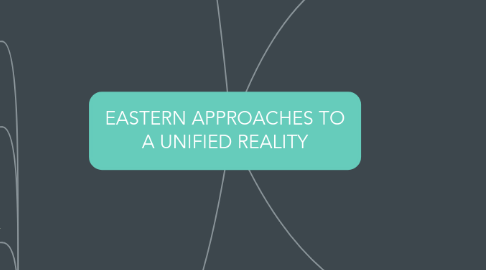
1. Buddhism
1.1. what is self
1.1.1. perception of self is not constant but ever-changeing
1.1.1.1. our perceptions are clouded by our opinions and biases and the way we're conditioned to understand reality by our cultures.
1.2. meaning of life
1.2.1. To end suffering
1.2.1.1. humans suffer because we continually strive after things that do not give lasting happiness
1.2.1.1.1. nothing is constant, everything changes through time, you have a constantly changing stream of consciousness
1.2.2. People suffer because the are addicted to change and fail to appreciate what truly matters in life
1.3. relationship between mind and matter
1.3.1. everything is interrelated
1.3.2. ignorance is the result of hate and greed
1.3.2.1. hate greed and ignorance are the 3 poisons that cause suffering
1.3.3. Buddhism rejects, the idea of an individual, immortal soul and fosters instead the buddhist belief in possibility of a harmony
1.4. ultimate nature of reality
1.4.1. ordinary appearances of things is an illiusion
1.4.2. The 5 Niyamas
1.4.2.1. Utu
1.4.2.1.1. This natural law orders the change of seasons and phenomena related to climate and the weather
1.4.2.2. Bija
1.4.2.2.1. the law of living matter, what we would think of as biology
1.4.2.3. Kamma
1.4.2.3.1. the law of moral causation. All of our negative thoughts, words and deeds create an energy that brings about effects called karma.
1.4.2.4. Dhamma
1.4.2.4.1. everything in the physical world, including mental and psychological experience, is categorised under three characteristics; impermanence, suffering, and egolessness
1.4.2.5. Cita
1.4.2.5.1. the law of mental activity like psychology. It concerns consciousness, thoughts, and perceptions
1.4.3. The Four Noble Truths
1.4.3.1. The cause of suffering
1.4.3.2. The truth of suffering
1.4.3.3. The end of suffering
1.4.3.4. The truth of the path that frees us from suffering
2. Confucianism
2.1. What is self
2.1.1. To reach a status of ultimate understanding of one self both physically and spiritually
2.2. meaning of life
2.2.1. Achieve Harmony
2.2.1.1. To strive and become one with nature, life, spirits, and reality.
2.2.2. to understand the 5 cardinal Realtions
2.3. relationship between mind and matter
2.3.1. Do not do to others what you do not want done to yourself.
2.3.2. Family comes before anything including self
2.4. ultimate nature of reality
2.4.1. Ren
2.4.1.1. Mercy
2.4.1.2. Humanity
2.4.1.2.1. Humaneness can be defined as the quality of compassion for others, which can include both people and animals
2.4.1.3. Love
3. Hinduism
3.1. what is self
3.1.1. Our perception of existence is illusory, because we fail to understand and experience the oneness of Self
3.2. meaning of life
3.2.1. to realize the identity of the self, or truest, spiritual essence
3.2.2. to re-unite or re-realize the identify of Atman and Brahman
3.2.2.1. Reality is a oneness or absolute, changeless, eternal connection with brahman
3.2.3. To reach the point of eternal bliss with Nirvana
3.3. relationship between mind and matter
3.3.1. Focusing on the differentiation between the ego and the Self
3.3.1.1. Self
3.3.1.1.1. a state of awareness and oneness with the universe
3.3.1.2. Ego
3.3.1.2.1. Our personality
3.3.2. the conscious mind has its existence independently in divinity within and beyond creation
3.4. ultimate nature of reality
3.4.1. True enlightenment is Self-realisation, to experience the supreme reality as Self
3.4.2. The Universe is Brahman
4. Taoism
4.1. what is self
4.1.1. To flow with life and always remain selfless
4.1.1.1. One must cut off ties with their own ego to recognize true separation between self and ego
4.2. meaning of life
4.2.1. Moderation
4.2.1.1. life has to be experienced. Taoism refers to a power which envelops, surrounds and flows through all things, living and non-living
4.3. relationship between mind and matter
4.3.1. Embracing the possibility between cause and reaction. to know or not to. The interrelationship between mind and matter rely one ones content with mystery
4.4. ultimate nature of reality
4.4.1. a life of complete simplicity and naturalness and of noninterference with the course of natural events, in order to attain a happy existence in harmony with the Tao.
